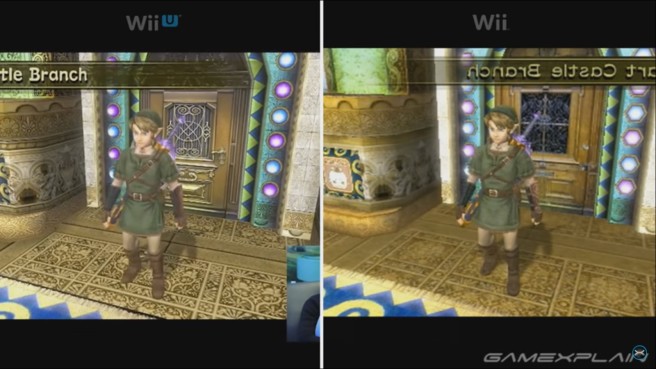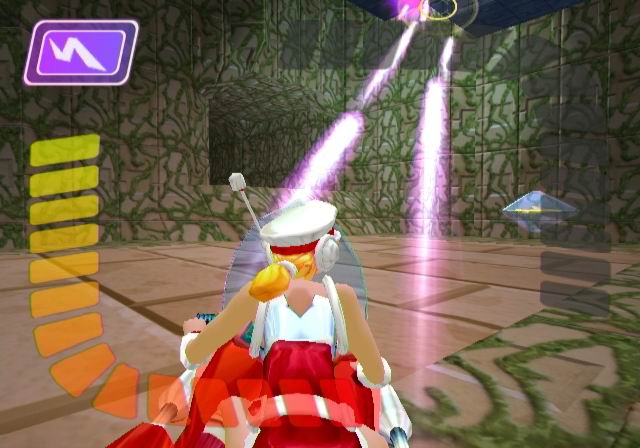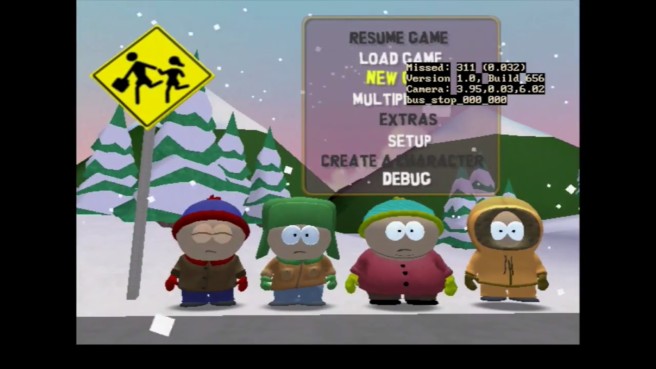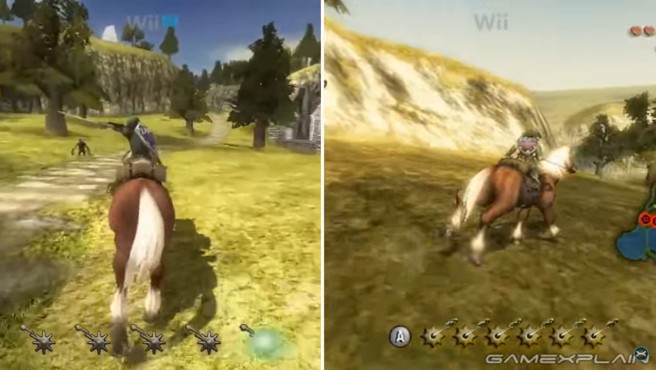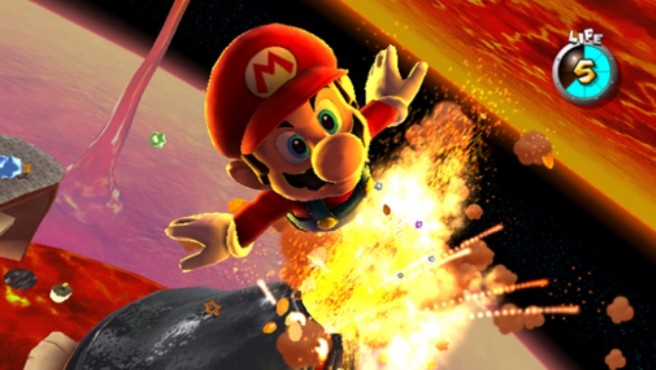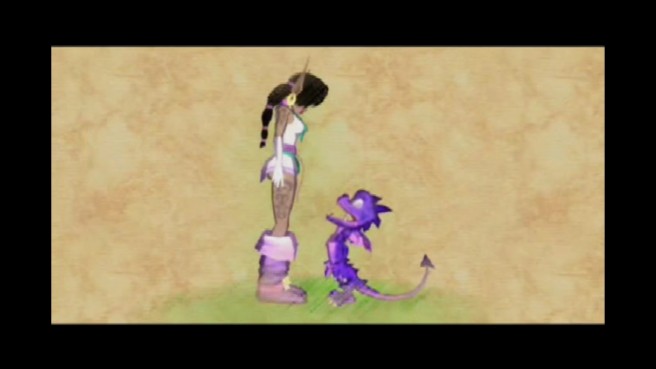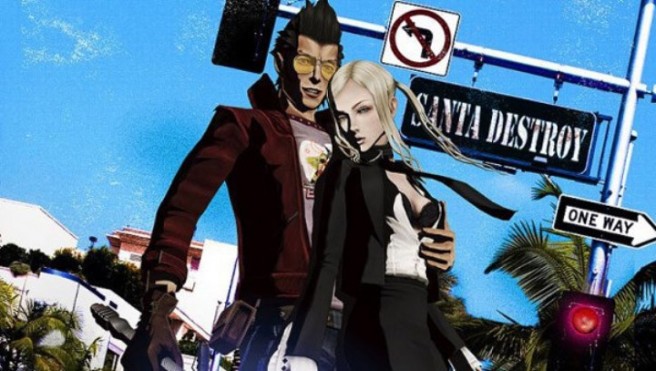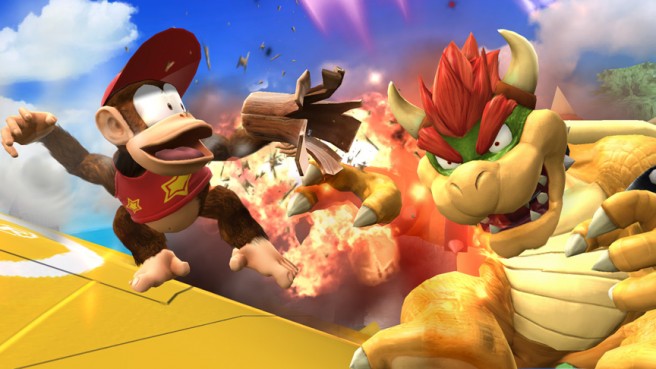Latest Zelda: Twilight Princess HD comparison
Posted on 9 years ago by Brian(@NE_Brian) in GameCube, Videos, Wii, Wii U | 6 Comments
GameXplain has a lengthy video comparing The Legend of Zelda: Twilight Princess on Wii U to the original versions based on yesterday’s Nintendo Minute footage. Check it out below.
A look at Zoonami’s cancelled GameCube project “Game Zero”
Posted on 10 years ago by Brian(@NE_Brian) in GameCube, News | 4 Comments
In the early 2000s, Zoonami (Zendoku, Bonsai Barber) was developing an sandbox action platformer for the GameCube. Sadly, it never made it to market. Very little about the project was known, but that’s changed now through a new report on Unseen64.
Here’s what we know:
– Cancelled because it was too complex for its time because of technical and marketing reasons
– Set in destructable voxel levels
– Could mine rocks and terrains
– Gain items and resources to build new structures
– Destruction and building of voxels in Game Zero were too RAM-intensive to be suitable for consoles or PCs hardware at the time
– Zoonami did not want to continue working on something that was not keeping pace with their plans
– The console gaming market was also one of their concerns, since popular gameswere in contrast with the sandbox, open-ended gameplay design planned for Game Zero
– In 3 years Zoonami did many experiments and created a playable prototype
– Game Zero’s protagonist would have been a female character
– The game was set in a fantasy alien planet inhabited by strange yellow creatures
– Explore different areas of the planet using vehicles and laser guns
– Cartoony graphic style created with simple voxel geometries
Screenshots of Game Zero are in the gallery below. There’s more on the title over at the source link.
Thanks to Jake for the tip.
Open world South Park title was once in the works for GameCube
Posted on 10 years ago by Brian(@NE_Brian) in GameCube, News, Videos | 4 Comments
Buzz Monkey Software, in partnership with Ubisoft, was once working on an open world South Park title for the GameCube, PlayStation 2, and Xbox. Development began in late 2004 and carried on for less a year before its eventual cancellation. All of the relevant details about what this South Park title would have offered are in the video below.
More: Buzz Monkey Software, South Park, Ubisoft
Another Zelda: Twilight Princess HD vs. original comparison
Posted on 10 years ago by Brian(@NE_Brian) in GameCube, Videos, Wii, Wii U | 27 Comments
A second video has been published online comparing the new version of Zelda: Twilight Princess HD to the original version. View it below.
EDGE ranks the 100 greatest video games
Posted on 10 years ago by Brian(@NE_Brian) in 3DS, GameCube, GBA, General Nintendo, News, Wii, Wii U | 328 Comments
EDGE recent put out a special issue featuring the 100 great video games of all time. The list is below, though the full magazine can be ordered here.
This is how EDGE says it determined its list:
“In compiling the list, we worked to simple criteria: all formats – console, PC, portable, coin-op, touchscreen – were eligible; we could include only a single entry from any series that features straight-up sequels; and each game had to stand up today rather than making the cut for reasons of nostalgia or historic significance.”
And here’s the full lineup:
100 – WarioWare Inc – GBA
99 – Spec Ops: The Line
98 – Papers, Please
97 – DriveClub
96 – Braid
95 – Super Hexagon
94 – Her Story
93 – Super Monkey Ball
92 – Final Fantasy XII
91 – Prince of Persia: The Sands of Time
90 – Katamari Damacy
89 – Animal Crossing: New Leaf
88 – Resogun
87 – Puzzle Bobble
86 – F-Zero GX
85 – The Sims 3
84 – R-Type Final
83 – Elite: Dangerous
82 – Bomberman
81 – Starcraft II
80 – Pac-Man Championship Edition
79 – BioShock
78 – CoD 4: Modern Warfare
77 – Puzzle & Dragons
76 – Tearaway
More: EDGE
A look into the development of Super Mario Sunshine
Posted on 10 years ago by Brian(@NE_Brian) in GameCube, News | 7 Comments
The latest report from German website Nintendo-Online looks into the development of Super Mario Sunshine. There are a couple of new tidbits, along with ones that are older but aren’t as widely known.
Here’s what the site shared with us:
– An unused camera behaviour in the game’s code suggests that the developers at least experimented with a multiplayer mode. Although it was dropped for unknown reasons, the early beta multiplayer camera is still functional.
– At Space World 2001, Miyamoto presented the first trailer to journalists. It is famous for showing a very early version of Sunshine. According to a complete video of the presentation, which hasn’t surfaced until now, Miyamoto stated that the material was confidential and was not supposed to be published. (https://www.youtube.com/watch?v=EU2-T6evbjQ) This didn’t prevent IGN from sharing a filmed version of that footage.
– Work on Sunshine began around Late 2000/Early 2001, so that the game was in development for only around one and a half years. It heavily suffered from time constraints, which even Miyamoto admitted 2003 in an interview.
– Sunshine was originally planned to feature some kind of train system to connect the various areas.
– At least five worlds were cut from the final game. Their names can still be found in the game’s code.
– Corona Mountain was supposed to be a world like all the others with multiple episodes.
– Sunshine originally run at 60 fps, even the version shown at E3 2002 mere weeks before release was 60 fps. The final game was downgraded to 30 fps for unknown reasons.
More: Super Mario Sunshine
Videos show Rare’s Kameo during GameCube development
Posted on 10 years ago by Brian(@NE_Brian) in GameCube, Videos | 3 Comments
Before Microsoft acquired Rare, the studio was working on a few GameCube projects. One of these was Kameo, which would later end up on the Xbox 360.
Videos of Kameo during its GameCube development days have now appeared on the YouTube channel of user “ptoponline”. The footage shows a helper who was cut from the final game, different character designs, and more.
Continue on below for all of the unearthed videos.
Video: A look at the original vision for Rayman 4
Posted on 10 years ago by Brian(@NE_Brian) in GameCube, General Nintendo, Videos | 8 Comments
Unseen64’s latest video takes a look at the original vision for Rayman 4, which was in development for just under a year over at Phoenix Studio for several platforms such as the GameCube. The studio hoped to bring Rayman back to its roots and deliver a surreal, meta story. Unfortunately, the project ended up seeing cancellation. Unseen64’s full report is in the video below.
Suda51 on No More Heroes and love for Travis, Killer7, cancelled Silver Case DS port
Posted on 10 years ago by Brian(@NE_Brian) in DS, GameCube, News, Wii | 7 Comments
The folks over at Anime News Network have published an interview with Suda51. The two sides talked a bunch about No More Heroes, Killer7, and even the Silver Case DS port that never made it to market.
You can find a few excerpts that we’ve picked out below. For the full interview, head on over here.
More: interview, Killer7, No More Heroes, Silver Case, Suda51, top
EVO 2015 – Smash Bros. Melee and Smash Bros. Wii U results
Posted on 10 years ago by Brian(@NE_Brian) in GameCube, News, Wii U | 3 Comments
EVO 2015 has now come to a close. Armada took home the top prize in the Super Smash Bros. Melee tournament while ZeRo was named the champion in the Super Smash Bros. for Wii U event.
Below is the full listing of results:
Super Smash Bros. Melee — Results
1. Alliance|Armada (Fox, Peach)
2. Liquid|Hungrybox (Jigglypuff)
3. EG|PPMD (Marth, Falco)
4. PG|Plup (Sheik, Samus)
5. TSM|Leffen (Fox)
5. C9|Mango (Fox, Falco)
7. Tempo|Axe (Pikachu)
7. MH|ChuDat (Ice Climbers)
9. Ice (Fox, Sheik)
9. CLG|PewPewU (Marth)
9. HugS (Samus)
9. DruggedFox (Sheik, Marth)
13. Liquid|Ken (Marth)
13. Lucky (Fox)
13. Tempo|Westballz (Falco, Fox)
13. Duck (Samus)
17. Fly Amanita (Ice Climbers)
17. Santiago (Fox)
17. SFAT (Fox)
17. Hax (Fox)
17. GC|SilentWolf (Fox)
17. TAY|Javi (Fox)
17. S2J (Captain Falcon)
17. MacD (Peach)
25. Reno (Marth)
25. WFX|Shroomed (Sheik)
25. DJ Nintendo (Fox)
25. VGBC|aMSa (Yoshi)
25. Laudandus (Sheik)
25. DarkRain (Captain Falcon)
25. Zanguzen (Falco)
25. XTR|Eddy Mexico (Luigi)
33. Azen Zagenite (Marth, Falco)
33. Lovage (Fox)
33. Kalamazhu (Peach)
33. DarkAtma (Sheik)
33. Poor Zhu (Falco)
33. 62-Bit|Vish (Captain Falcon)
33. Kira (Sheik)
33. Far! (Falco)
33. Swedish Delight (Sheik)
33. OkamiBW (Sheik)
33. COG|Wizzrobe (Captain Falcon)
33. Animal (Fox)
33. Darrell (Samus)
33. Azusa (Peach)
33. Frootloop (Falco)
33. The Moon (Marth)
49. MIOM|Tafokints (Sheik)
49. Forward (Falco, Fox)
49. Lord (Captain Falcon)
49. JJS|MikeHaze (Fox)
49. KPan (Fox)
49. Cactuar (Fox)
49. Prince Abu (Jigglypuff)
49. VS|Blea Gelo (Luigi)
49. Drephen (Sheik)
49. FSBR|Crush (Fox)
49. VGBC|Redd (Fox)
49. FatGoku (Fox)
49. Joey Cheung (Falco)
49. Dart (Marth)
49. Light (Peach)
49. SS|Colbol (Fox)
Super Smash Bros. for Wii U — Results
1. ZeRo (Sheik, Diddy Kong)
2. LLL|Mr. R (Sheik)
3. Nairo (Zero Suit Samus)
4. ASA|Abadango (Wario, Pac-Man, Rosalina & Luma)
5. Boreal|Ally (Mario, Marth)
5. IQHQ|DaBuz (Rosalina & Luma, Olimar)
7. PG|Esam (Pikachu)
7. GW|FOW (Ness)
9. VS|StaticManny (Sonic)
9. PG|SS (Ness, Villager)
9. Larry Lurr (Sheik, Fox)
9. Rain (Diddy Kong, Sheik)
13. TRNP|DaPuffster (Mii Brawler)
13. LOF|False (Sheik)
13. RC|Regi (Mr. Game & Watch)
13. Mocha (Sonic)
17. Tyrant (Meta Knight)
17. MVD (Diddy Kong)
17. CaptAwesum (Villager)
17. 8BitMan (R.O.B.)
17. HBA|Angel Cortes (Diddy Kong)
17. Bloodcross (Charizard)
17. John Numbers (Wii Fit Trainer)
17. GT|MJG (Villager)
25. CT|Salem (Sheik)
25. Shaky (Ness)
25. Tweek (Bowser Jr.)
25. SIN|Trevonte (Palutena)
25. Christian Rendon (Wii Fit Trainer)
25. IQHQ|Vinnie (Sheik)
25. MrConCon (Luigi)
25. Falln (Rosalina & Luma)
